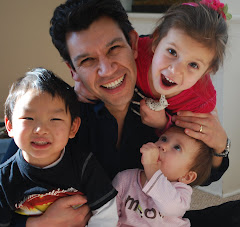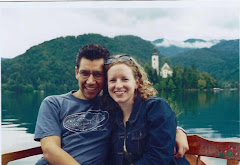Here are some traditions we learned that they might do in China to welcome the New Year with a clean slate:
- houses are cleaned top to bottom to remove traces of the old year and its misfortunes , and to bring good luck for the new year
- gates are repainted, windows washed (but no sweeping in case you sweep away all the good luck)
- new outfits and haircuts for the kids and adults
- bills and debts are paid before the holidays begin because according to tradition old debts cannot be claimed after new years
- cases of flowers, representing rebirth and new growth, are placed around the house
- the knives/scissors are put away so as to not “cut off” the good luck
 market- but I told the kids this time it was for Chinese New Year:), the kids got haircuts (so cute!) and we brought out their beautiful traditional clothes we got for them in China. I think next year I will get bunches of fresh flowers:).
market- but I told the kids this time it was for Chinese New Year:), the kids got haircuts (so cute!) and we brought out their beautiful traditional clothes we got for them in China. I think next year I will get bunches of fresh flowers:).The Kitchen God (whose picture many Chinese households have in the kitchen), watches over the household and an offering is placed in front of him with the plumpest and most delicious bits of food and sweets. Then just before the New Year holiday the families slather his lips with honey so that only sweet words will come out of his mouth. He watches the family all year. At year’s end the family burns the picture, returning him to the spirit world. There he reports on the family’s behavior. On NY’s Day, the family hands a new picture of the kitchen god to welcome him back. We don't have a kitchen god in our kitchen (maybe that explains some of my disasters in the kitchen?)...
We learned from the books we took out of the library that Chinese New Year traditions began thousands of years ago as a way to scare away a monster (Nian) who was attacki
 ng the people. Nian was afraid of noise, light, and the color red. The people built fires, hung red signs, and longago Chinese burned red bamboo to drive away evil spirits and bring prosperity. Then gunpowder (invented in China) was stuffed into the bamboo stems and fireworks evolved. Red banners are hung in the doorways black on red paper that convey hopes for the upcoming year. Nianhua are pictures hung in the doorways and around the house with symbols such as:
ng the people. Nian was afraid of noise, light, and the color red. The people built fires, hung red signs, and longago Chinese burned red bamboo to drive away evil spirits and bring prosperity. Then gunpowder (invented in China) was stuffed into the bamboo stems and fireworks evolved. Red banners are hung in the doorways black on red paper that convey hopes for the upcoming year. Nianhua are pictures hung in the doorways and around the house with symbols such as:- fish (for abundance)
- dragons (for power)
- butterflies (for longevity)
- bats (for good luck)
- seeds, melons (for children).
These nianhua bring blessings and good luck; some families hang pictures of door gods outside the front door to guard against ghosts and bad luck.
Inside the houses, families decorate altars with pictures and food to honor family members who have died. The altars remind the families of their past as they look towards the future. This reminds me so much of Dia de los Muertos in Mexico!There is a LOT of traditional foods for Chinese New Year, and it seems that each type of food represents a different type of blessing for the new year:
Guests are served tea with sweet-meats, red and black melon seeds, and fruits and delicacies such as puffed rice cakes, dump-lings and deep-fried round doughnuts. In addition, liquor and tobacco are offered. From what we read in the books we learned:
- Spring Rolls: represent gold bricks
- Vegetables: cut in the shapes of coins to represent prosperity
- Tangerines, kumquats, oranges: good luck
- A whole fish (yu- sounds like the word for “surplus”) or a whole duck or chicken: symbolizes bounty
- Tray of prosperity: six-sided platter with sections for candied melon (growth and good health), red melon seeds (joy, happiness, truth), lychee nuts (close family ties), kumquats (wealth), coconut (togetherness), peanuts (long life), longnan (many good sons), lotus seeds (many children)
- Jiaozi: dumplings. 400 year old tradition of serving them at the midnight meal on New Year’s Eve. Traditionally: ground pork, garlic, chives, and cabbage. They are boiled, steamed, or fried (crusty and golden like golden coins)
- Noodles: not cut! Symbolize longevity, long prosperous life. In some families, birthdays were not celebrated until they new year, and noodles are always eaten on birthdays.
Sleep is discouraged at the Chinese New Year party. It used to be believed that the longer the kids stay up, the longer their parents will live. At dawn, the front door is opened and the master of the house says a blessing of prosperity for the coming year.
Before leaving, the well-wisher present gifts of money wrapped in red paper to all the unmarried children of the family. These are the "red Envelopes," (hangbao). Vivi and Tonito received some hangbao from the Mandarin teacher at their school!
On the 15th day of the of the New Year, the full moon rises and that is the Lantern Festival. At night, people parade through the streets carrying lanterns. Young men do dragon dances, and firecrackers go off. The New Year season comes to an end. This year that is February 9th I think.










1 comment:
I love how you incorporated the traditions into your home like that!! It's great that your son will grow up feeling that it's not just *his* culture, it's his entire family's culture.
Post a Comment